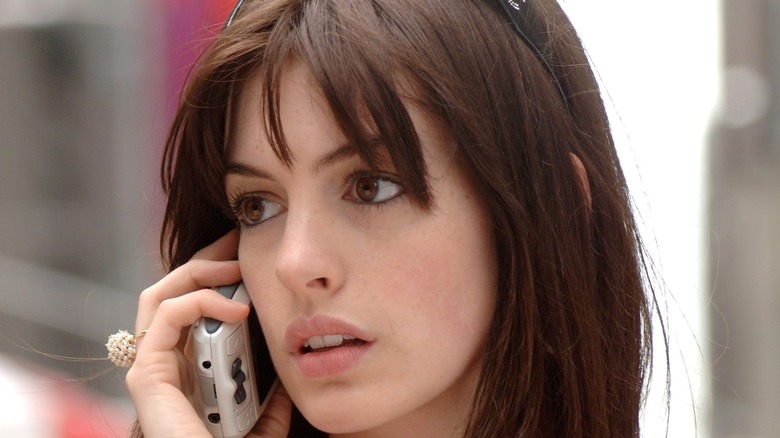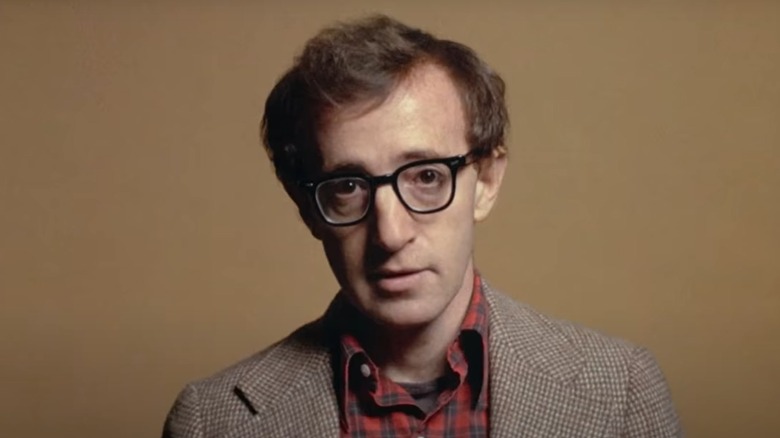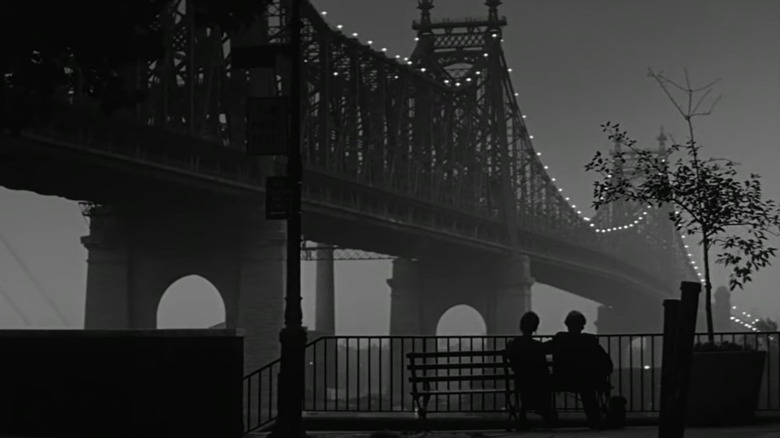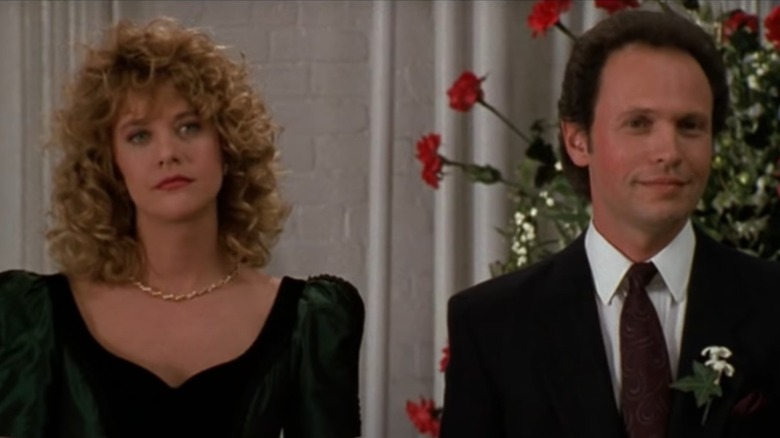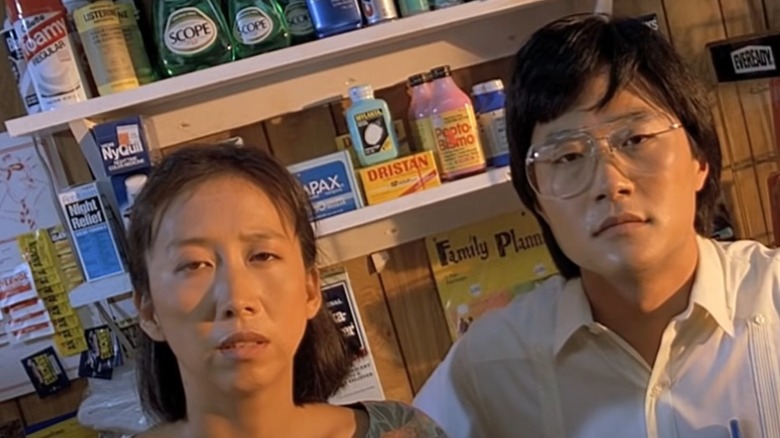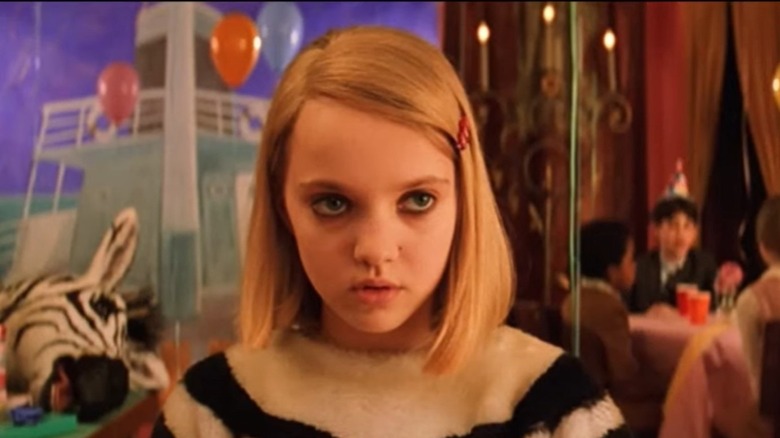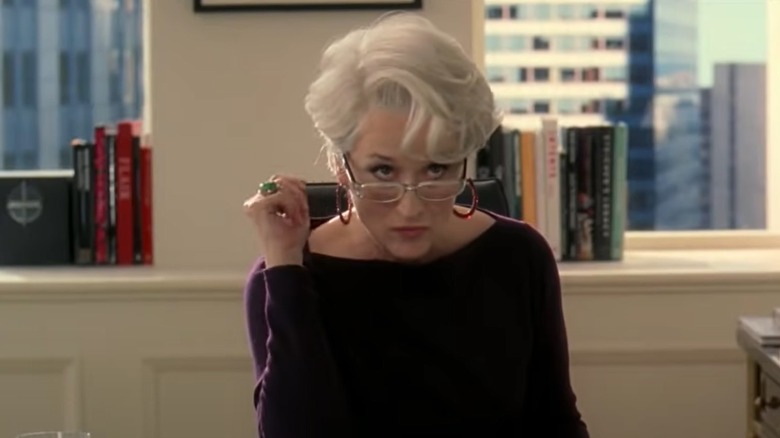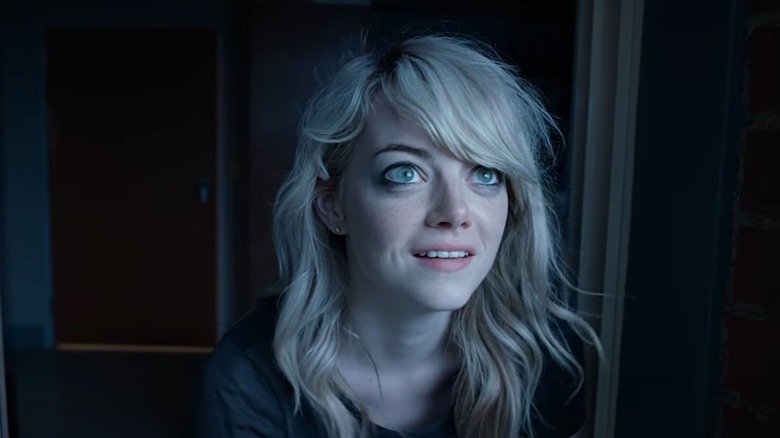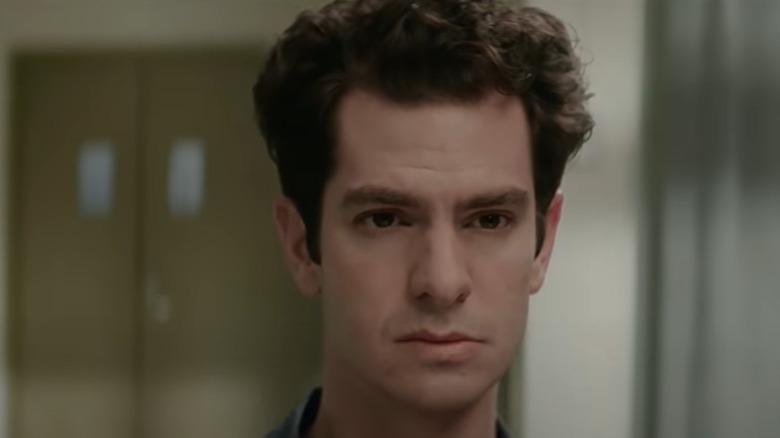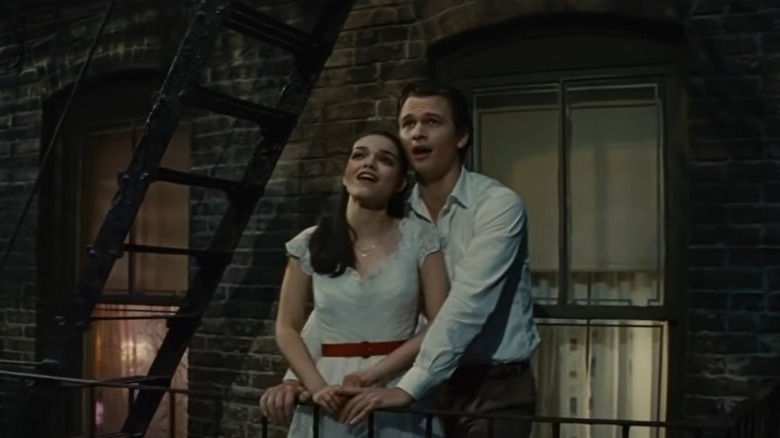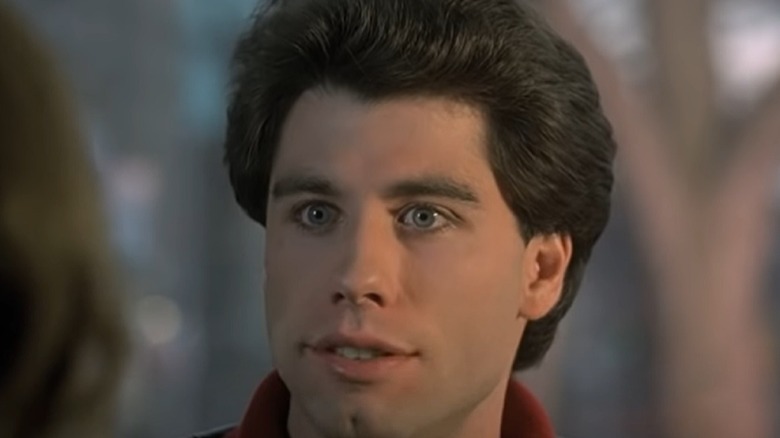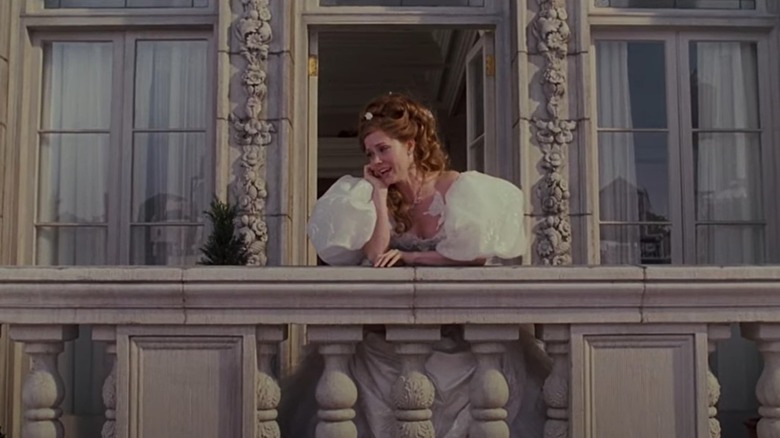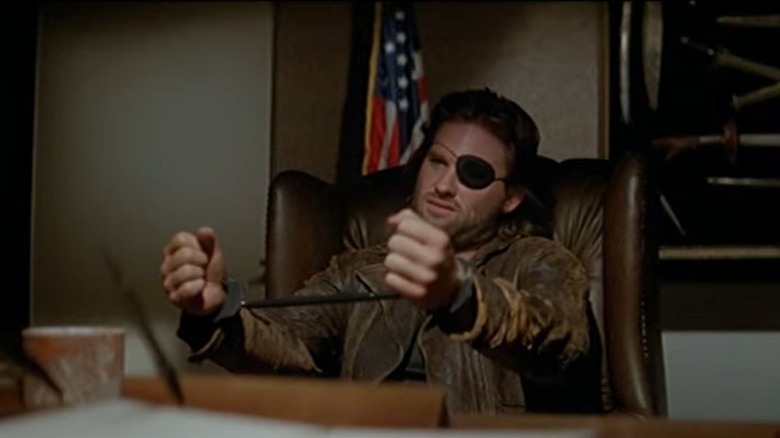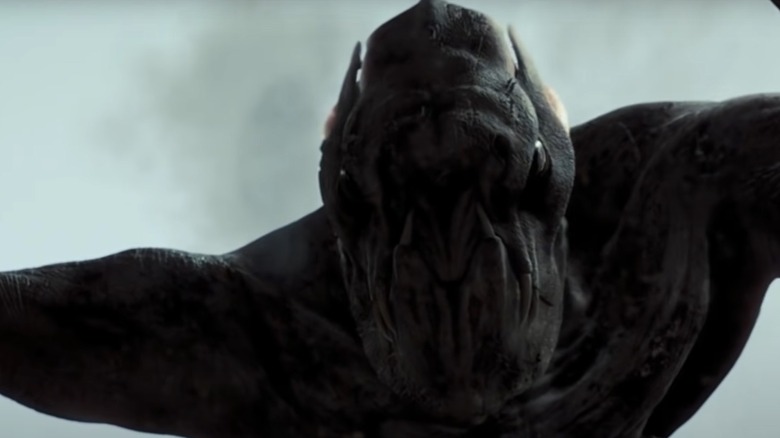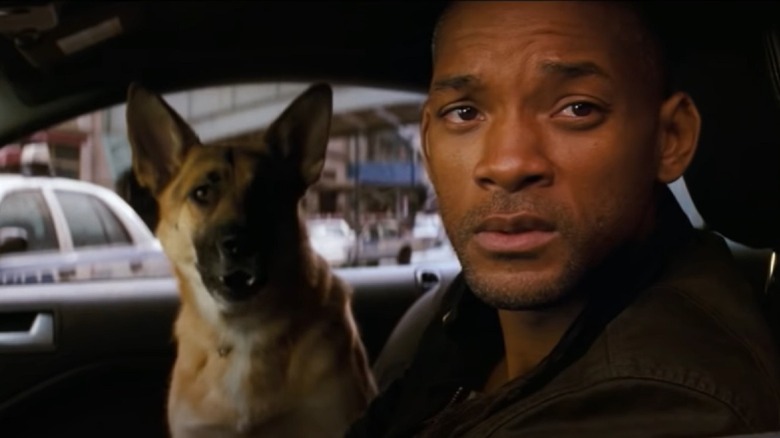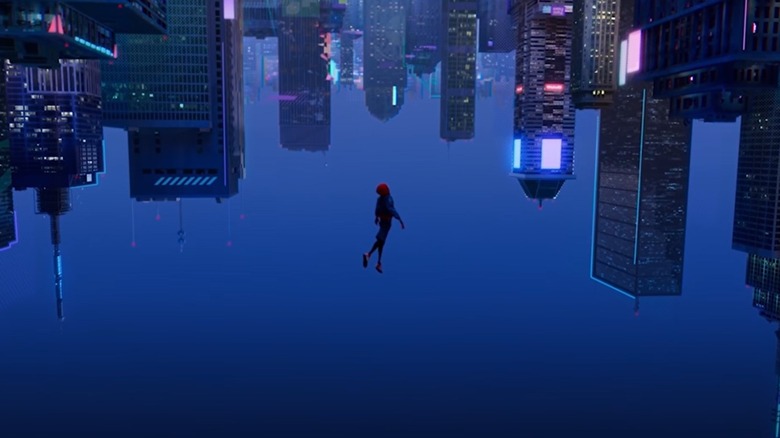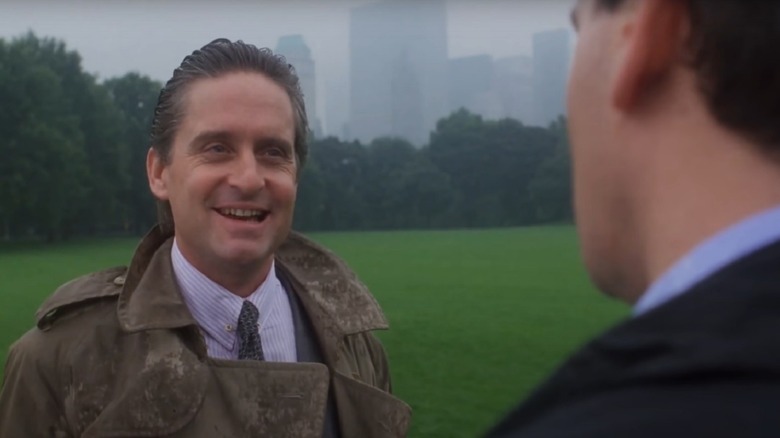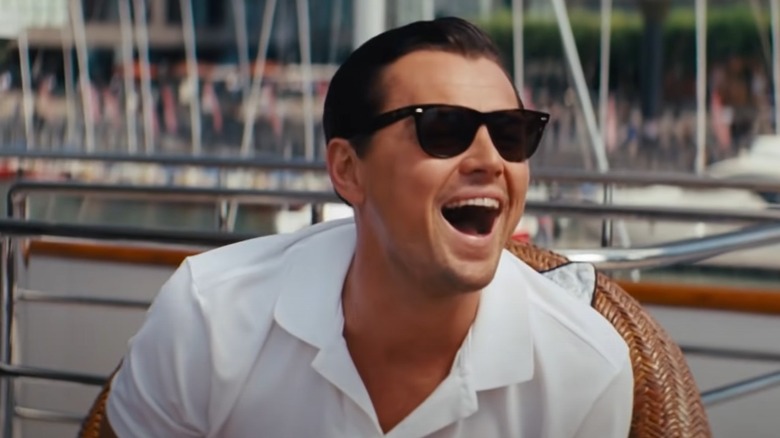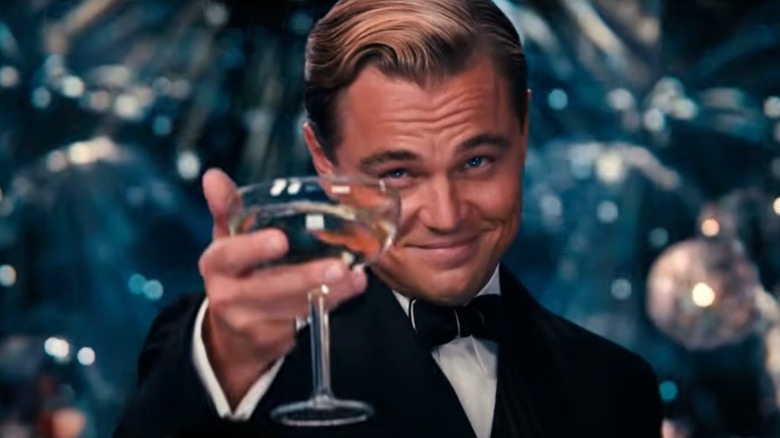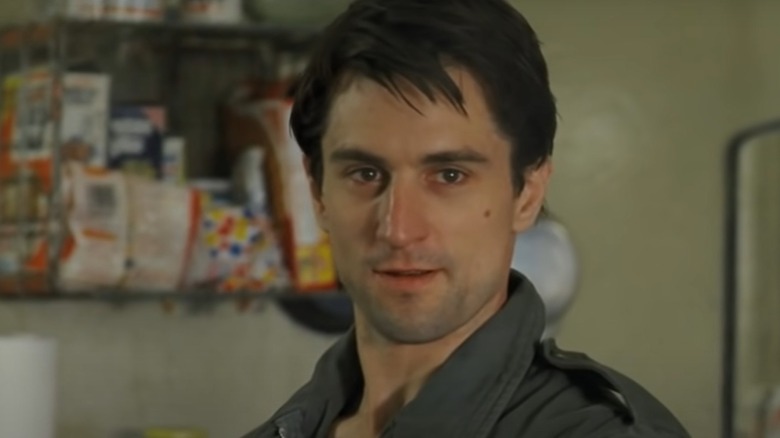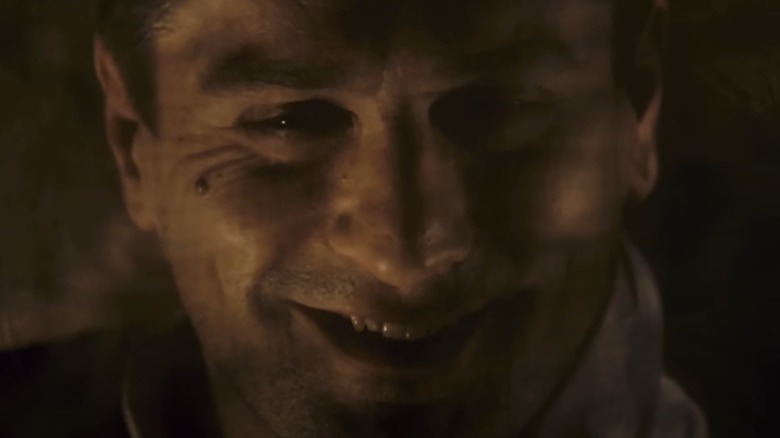The 20 Best New York Movies To Add To Your Watchlist
There's always a new story happening in New York City, particularly because the city consists of millions of people living in one big metropolitan area, and that is reflected in the large number of films that are set in New York.
A film that is set in New York doesn't have to fit into one specific genre. New York films can be quite unique and varied. You could be watching a sweet romantic comedy where two very different people realize they are perfect for each other one day and a gritty crime drama in which two warring gangs go toe to toe in several bloody shootouts the next day, followed by an epic science fiction tale that pits a lone hero against impossible odds.
Due to the vast collection of films set within this sprawling city, it can be hard to narrow down which films are actually worth the time. There are some New York-based films that you should add to your watchlist right away.
Annie Hall
Woody Allen is one of the most prolific filmmakers around. Allen has produced some of the most critically acclaimed comedy films ever made. Many of his best works take place within the Big Apple, and one of these films is "Annie Hall."
This not-so-romantic love story follows comedian Alvy struggling to come to terms with why his ex-girlfriend Annie (played by the perfectly cast Diane Keaton) broke up with him. While the film looks and feels like a traditional romantic comedy, Allen's portrayal and characterization of Alvy turn the film into more of a love letter to the city itself.
In between his many philosophical discussions about life with Annie, there are constant references to how much Alvy appreciates what New York has to offer, which becomes especially apparent when even Annie Hall has to spell it out for him. By the time the credits roll, it becomes clear that Alvy (and perhaps, by extension, Allen) are more in love with the location than the woman who lives in it.
Manhattan
If Woody Allen's "Annie Hall" didn't feel like it offered enough New York love, then his 1979 film "Manhattan" will definitely suffice. It follows some of the same ideas as "Annie Hall," as it is centered around a writer who is struggling with love in the city. This time, the man is dating a seventeen-year-old while also forming a connection with the woman who is having an affair with his best friend.
In the context of what we know about Allen's personal life today, watching a middle-aged man date someone so young can make someone feel uncomfortable. But if the notion of "separating the art from the artist" is applied, then "Manhattan" still has a lot going for it. Not only does it feature Allen's signature humor and monologues, but it also showcases strong performances from the female cast members, particularly Meryl Streep as Allen's ex-wife and Diane Keaton as the mistress.
Additionally, the film offers several small moments that demonstrate an appreciation for the city, from the opening montage of cityscape images set to "Rhapsody in Blue" to the iconic Queensboro Bridge Shot. You can't get anything more New York than that.
When Harry Met Sally
New York is a great place to set a love story. There are so many films about people in the city spontaneously meeting and forming a connection. One such movie is "When Harry Met Sally," which chronicles the 12-year love story of the title characters as they grow more attracted to each other the more times they meet up.
New York City serves as the backdrop for their slow-burning romance, which includes walks through Central Park and spontaneous kisses during the annual New Year's Eve party, along with several conversations about the nature of men, women, and relationships.
But the real star of the film is the chemistry between both Harry and Sally, played by Billy Crystal and Meg Ryan, respectively, and the several memorable moments between the two that will make viewers laugh and their hearts melt.
The most iconic moment is easily the infamous deli scene where Sally fakes an orgasm in front of several people. This scene is over the top without being raunchy, and Sally's fake orgasm is hilariously followed by the "I'll have what she's having" line. There are few romantic comedy moments that are as funny as this one.
Do The Right Thing
Famed director Spike Lee is not afraid to confront controversial issues regarding race and prejudice in his joints. "Do The Right Thing" is one of the best examples of this, chronicling the daily lives of several different characters in a Brooklyn neighborhood on a hot summer day.
In particular, it follows the clashes between the Italian-American owners of a pizza restaurant and their African-American neighbors, which culminates in an intense display of violence that draws everyone in the neighborhood into it. This is inspired by a real incident that led to racial violence.
"Do The Right Thing" is the perfect blend of comedy and drama because it is filled with several distinct characters (including one played by Spike himself) that easily switch between the two genres while the more serious topics emerge in the film's climax. Each character feels fully realized, further enhancing Lee's colorful version of Brooklyn, which makes everything that happens in "Do The Right Thing" feel just as timeless and relevant today as it was in 1989.
The Royal Tenenbaums
It's very easy to tell when you're watching a Wes Anderson film. His unique visual style, deadpan humor, and recurring cast members are easily distinguishable. "The Royal Tenenbaums" is classic Anderson, as the film details the strange and humorous lives of the titular family. More specifically, it follows the three adult children and all of the dark secrets and affairs that come to light once the family is reunited after their father fakes an illness.
While the city of New York doesn't play a massive role in the film's plot, and the film goes out of its way to avoid showing any famous landmarks of the city, anybody who's been to the city can identify the familiar New York architecture mixed with the colorful, dollhouse-like quality of Anderson's sets and filmmaking style.
And in addition to the fact that this is a quirky and lovable New York story, there's also the peculiar hilarity in watching a group of adults act like children while their father tries to reconcile with them after abandoning them years prior.
The Devil Wears Prada
Breaking into the world of New York City fashion can be hard, especially when everyone is competing for attention, and you can lose your job on the spot. This is the world on display in "The Devil Wears Prada," which follows aspiring fashion assistant Andy and her tense relationship with harsh and demanding magazine editor Miranda Priestly. Meryl Streep's portrayal of Priestly, which earned her another one of her several Academy Award nominations, is the main draw here.
Priestly (Said to be inspired by Anna Wintour) is one of Streep's most iconic characters, with an ice-cold delivery and ruthless personality that would feel out of place in any setting other than the Big Apple. The cerulean sweater speech and the "Everyone wants to be us" conversation are two of the standout moments that have cemented the character, and the film itself, as a standout.
Some fans of the film might bemoan the recent news that a sequel will probably never happen, but a follow-up may ruin the legacy that the original has established so well over the years.
Birdman
Broadway is a big deal in New York. In addition to the premiere mainstays, there's always a new musical or dramatic production popping up on the scene. "Birdman (Or the Unexpected Virtue of Ignorance)" follows a former movie star named Riggan attempting to write, direct, and star in his own Broadway show in an effort to revitalize his career. But one bad thing after another happens to the play, and Riggan's deteriorating mental state causes him to lash out and have hallucinations about the fictional superhero called Birdman that he used to play in a film trilogy back in the 1980s.
Directed by Alejandro González Iñárritu and starring Michael Keaton in the title role, "Birdman (Or the Unexpected Virtue of Ignorance)" is a very unique take on being a celebrity on the Broadway scene, as well as a very funny view on what it takes to put on a production. It's hard to pick a standout scene, but you can't go wrong with watching Michael Keaton's Riggan run through Time Square in his underwear while trying to get back into his theatre.
Tick, Tick Boom
If "Birdman" takes a comedic look at what it takes to put on a Broadway show, then "Tick, Tick...Boom!" is a much more serious and honest look at how hard it can be to make it big in a city where several others share the same goal. Based on the semi-autobiographical play of the same name by "Rent" creator Jonathan Larson, the musical follows a playwright named Jon fighting to finish a play he's been working on for years while also trying to keep his personal life from falling apart.
Larson's love for the city is on display in every moment of the film, and it is perhaps at its most evident during the "Sunday" musical number, where the former Moondance Diner turns into a stage filled with Broadway legends. The film also offers a glimpse into several of the themes and motifs Larson would explore in "Rent," which include the impact of the AIDS epidemic on New York in the 1980s and 1990s and living a bohemian lifestyle while struggling to make it big as an artist.
West Side Story
Manhattan's Upper West Side serves as the battleground for the Jets and the Sharks in "West Side Story," a musical about how the love story between two people from either side of the two rival gangs starts a war that ends in bloodshed. Inspired by "Romeo and Juliet," the musical was adapted for film twice: The first time in 1961 and the second time in 2021. While the original film is a classic, the modern-day remake directed by Steven Spielberg is not to be overlooked.
The social issues that the film explores, which include racism and gentrification, still feel relevant today. And they are made even better thanks to the fact that the remake corrects the original film's biggest mistake and casts actual Puerto Rican actors for the relevant roles.
Spielberg's already strong visual style helps make 1960s New York feel both modern and classic, but it also makes the iconic musical numbers stand out even more than they already did. All of this makes the second "West Side Story" adaptation even better than the first.
Saturday Night Fever
You can't underestimate how much of an impact "Saturday Night Fever" had when it was released in 1977. It was one of the biggest films in the world at the time: It gave John Travolta his first Oscar nomination for Best Actor, and, most importantly, it made disco more popular with a mainstream audience.
"Saturday Night Fever" is set to the iconic sounds of The Trammps, Bee Gees, and KC and the Sunshine Band, and it tells the story of Italian-American Tony Manero as he searches for purpose in his Brooklyn neighborhood while spending his nights dancing at a disco nightclub in preparation for a competition.
There's a lot about the film's plot that hasn't aged well in the last few decades, particularly its treatment of women and how the characters talk about Puerto Ricans.
But Tony's journey of self-discovery is still the perfect blend of funny and heartbreaking, and he still remains one of Travolta's best characters. And who can forget all of those iconic dance scenes, especially the climactic final dance with Tony in his signature white suit?
Enchanted
Disney knowns how to make an iconic fairy tale movie, but it also knows how to make a solid live-action family film. "Enchanted" combines both of these genres of films into one of the company's best movies in years.
Giselle, the princess of an animated fairy tale kingdom, is transported into New York City by an evil witch and must adapt to the real world and find her way back to her prince charming and receive her own happily ever after. It isn't long until her other fairy tale friends and enemies come into the real world, leading to a showdown between worlds.
The traditional fish out of water story is hilarious thanks to an underrated performance by Amy Adams as the live-action Giselle. But like many Disney fairy tales, the real stars are the musical numbers, which are all further enhanced by the beautiful city visuals. The music was so good that three of the songs were nominated for Best Original Song at the Academy Awards, although none of them actually ended up winning.
Escape From New York
John Carpenter, the man behind such iconic horror films like "The Thing" and "Halloween," also delivered one of the most unapologetically silly and memorable action films of the early 1980s. "Escape From New York" takes place in the dystopian future of 1997, where Manhattan Island has been transformed into a maximum-security prison, and the U.S. President has been captured by the island's inhabitants. It's up to former soldier Snake Plissken to infiltrate the island and rescue the President before a series of explosives implanted in his blood go off.
Carpenter's version of a broken-down Big Apple is very atmospheric, filled with plenty of underground fight clubs and vicious street gangs that help highlight the film's light but effective exploration of the themes of global nuclear war and political corruption. But the real star is Kurt Russel's Snake, the perfect cheesy action hero. His character is so iconic that he ended up returning for a sequel film, "Escape from L.A.," as well as comic books, a novel, and a potential remake.
Cloverfield
If aliens are invading the planet, then New York is probably going to be the first place they hit. "Cloverfield" is another alien invasion film that takes place in the city. But unlike so many other movies that are filmed to look perfect, "Cloverfield" is made to look like found footage recovered from the handheld camera of someone who recorded him and his friends attempting to escape the city after a monster attacks.
It can be hard to follow what's happening with all the shaky camera movements, but you still get several great shots of New York getting destroyed by the titular monster. The most iconic scene takes place when the head of the Statue of Liberty comes crashing down on the street right next to our protagonists. And while it isn't the first nor the biggest found footage-style film, "Cloverfield" still stands out as one of the best the genre has to offer.
I Am Legend
New York is a place that is always busy because there are just so many people around, which makes seeing the Big Apple almost completely empty a strange and very terrifying sight. This is conveyed perfectly in "I Am Legend," which takes place in a world where humanity has almost been wiped out and those who survived have turned into vampires that hide in the darkness during the day and attack at night. The only person left in the city that isn't infected is Will Smith's Robert Neville, a doctor fighting to find a cure for humanity and keep his sanity amongst the isolation.
Robert Neville's battles with the monsters are both thrilling and terrifying, but "I Am Legend" gets its best scares from utilizing the creepiness of a nearly empty New York City to create a perfect sense of dread. The tense moments never cease with this film, and the background music and the looming threat of the vampires lurking off camera make this film one of the strongest monster/horror movies you could watch.
Spider-Man: Into the Spider-Verse
The superhero Spider-Man is synonymous with New York City. And each of Spider-Man's film adaptations make great use of the city. There are many great films to chose from starring the titular hero, but his most memorable one happens to be animated: "Spider-Man: Into the Spider-Verse." The film serves as both an origin story for Miles Morales and a crossover event featuring various other Spider-Men throughout the years.
The film takes viewers through a kaleidoscopic New York that feels like it just leapt straight from a comic book panel as the Spider-Men must stop the evil kingpin from destroying the universe.
Whether it's a quiet scene of Miles walking through the city set to an amazing hip-hop soundtrack or Miles mastering the art of web slinging in a "leap of faith" moment set to a beautiful night sky, "Spider-Man: Into the Spider-Verse" is a visual treat that celebrates the rich history of Spider-Man while serving up the most compelling version of New York that film adaptations have ever seen.
Wall Street
There are many different people that come to New York to make money, and Oliver Stone's "Wall Street" shows just how dirty the world of powerful, rich men can be once they get a taste of money. Young stockbroker Bud gets involved with corporate raider Gordon Gekko, leading to a battle of insider trading that threatens to destroy both of their lives, all in the pursuit of more money and power.
The film serves as a critique on the greedy lifestyle that permeated throughout the 1980s, as evident by the iconic line that Gekko states in the middle of the film: "Greed, for lack of a better word, is good."
The strength of the film lies in the chemistry between Charlie Sheen's Bud and Michael Douglas' Gekko, which makes something as mundane as trading stocks feel like a high-speed car chase. The latter's performance is the one to watch, as it won Douglas an Academy Award for best actor.
The Wolf of Wall Street
If Oliver Stone's "Wall Street" is a critique of 1980s greed, then Martin Scorsese's "The Wolf of Wall Street" is the modern-day version of that, but one that is actually based on a true story. During the late 1980s and early 1990s, stockbroker Jordan Belfort rose to the top of the Wall Street game after starting his own brokerage firm, all the while indulging in excessive sex and drugs while participating in illegal activities that attract the attention of the FBI.
Viewers' mileage may vary on how much of the depravity on screen they are willing to take, especially since the film is exactly three hours long and doesn't hold back when it comes to profanity and graphic nudity, and there has been some debate as to whether or not the film actually critiques Belfort's lifestyle or embraces it.
But as a character study on greedy corporate Wall Street tycoons, "The Wolf of Wall Street" delivers almost entirely on the strength of Leonardo DiCaprio's performance alone, one of the many performances that got him nominated for best actor.
The Great Gatsby
Not only is F. Scott Fitzgerald's "The Great Gatsby" a classic piece of American literature, but it has also been adapted numerous times ever since its publication in 1925. Director Baz Luhrmann, known for bombastic and stylized films like the modern-day adaptation of "Romeo + Juliet" and the Academy Award-winning musical "Moulin Rouge," took his own stab at the classic story of Nick Carraway's documentation of the tragic love story between the enigmatic Jay Gatsby and the elusive Daisy Buchanan.
Luhrmann's version of 1920s New York is a visual treat, infused with bright colors and a modern-day soundtrack to make it stand out in a way that might not be to everyone's tastes due to its reliance on CGI and fast-paced camera movements; however, the result definitely enhances the familiar story for a new generation. It also helps that Leonardo DiCaprio is the perfect choice for Jay Gatsby, and he perfectly conveys the more troubling aspects of his character while being highly charismatic.
Taxi Driver
Darkness can be found all around New York City, especially among the people who live in it. Martin Scorsese explores this darkness in "Taxi Driver," which follows Vietnam War veteran Travis Bickle as he transforms into a violent vigilante while working the graveyard shift as a cab driver. Travis Bickle (portrayed by Robert De Niro) is one of Scorsese's greatest antiheroes.
His "You talkin' to me?" speech become ingrained in pop culture and served as the inspiration for both Todd Phillips' "Joker" and John Hinckley Jr.'s assassination attempt on President Ronald Reagan. "Taxi Driver" isn't for everybody, as the film features several internal monologues detailing Travis' descent into madness, plenty of violent shootouts, and an uncomfortable look into child prostitution thanks to a standout performance by a young Jodie Foster.
But not only does the film serve as a fascinating character study, but it also serves up a portrait of New York dying from the inside and filled with characters that are hard to love but are intriguing nonetheless.
Once Upon a Time in America
New York City has served as the backdrop for several of the most epic crime films ever made. One such film is "Once Upon a Time in America," Sergio Leone's final film that chronicles the life of Jewish-American gangster David "Noodles" Aaronson and his return to the city after a series of violent events in his earlier years caused him to abandon both his home and his childhood friends.
It's filled with all the controversial violence and profanity you'd expect from a film in this genre. The film's portrayal of the city's organized crime in the 20th century during the Prohibition era is uncompromising but fully engrossing from start to finish.
And it helps because the film itself is incredibly long. The European version, which is Leone's intended vision, clocks in at nearly four hours long, much longer than the critically panned two-hour version released in America. "Once Upon a Time in America" truly is the epic crime drama to end all others.
